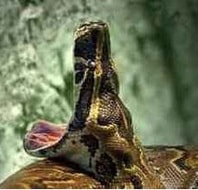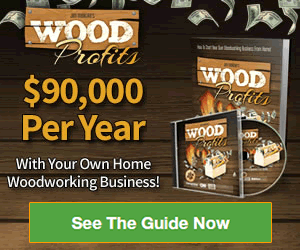Florida Snakes |

Custom Search
|
About 50 different native snake species inhabit Florida, from those 6 are venomous and 44 non-venomous snakes, and also several invasive species.
Florida non-venomous snake speciesThese snakes aren't harmful to humans, and in fact, provide us with a very valuable service eating rodents and even other venomous snakes. Snakes are an important part of keeping the ecosystem at a good balance. Although they are harmless some of them are very often mistaken for other venomous snake species and needlessly killed.
Here are some of the most common and recognizable non-venomous snake species we may find in Florida. 
Southern black racer
The Southern Black Racer snake (Coluber constrictor priapus) is a common non-venomous snake species found in and around the southern regions of the United States. It's widely spread throughout the Florida mainland and also the Florida Keys. Outside of Florida, it can also be found throughout the Eastern regions of the US, from NE Texas. 
Eastern indigo snake
The eastern indigo snake or blue indigo snake (Drymarchon couperi) is a large non-venomous colubrid snake found in the Eastern United States. Historically, their range extends throughout Florida, extreme south Alabama, the coastal plain of southern Georgia and extreme southeast Mississippi. Other non-venomous snake species found in Florida:
Florida venomous snake speciesIn the United States, 99% of all venomous snakebites are from pit vipers like rattlesnakes, copperheads or cottonmouths/water moccasins and all of those are present in Florida today.
Florida is home to 6 venomous snakes, those snakes belong to 2 types or families the pit vipers and those of Elapidae family. In the Central Florida area, there are 4 species and the copperhead and timber rattlesnake are found only in north Florida. These snakes are potentially dangerous to humans but just like their non-venomous cousins provide valuable services to humans.

Eastern diamondback rattlesnake
The Eastern diamondback rattlesnake (Crotalus adamanteus) is a highly venomous pit viper species found throughout the southeastern United States. The largest snake found in the US is also the most dangerous snake found in Florida. Their average size is around 5 to 6 ft, and they can strike half its body length. Read more about the Eastern diamondback rattlesnake. 
Pigmy rattlesnake
The Pigmy rattlesnake (Sistrurus miliarius) is a small venomous pit viper found in the southeastern part of the United States. These are very small rattlesnakes only averaging 15 to 22 in length. They do have a rattle but it's so small that sounds more like a buzzing insect. For this reason, they are also known as ground rattlers or buzzworms. The little pygmy rattlesnake has a feisty disposition and is quick to strike making the species responsible for more snake bites in Florida than any other venomous snake. Although its bite is very painful it's not usually fatal to an adult human but it can still pose a danger to small children, and pets like dogs or cats. Read more about the Pigmy rattlesnake. 
Copperhead
The Copperhead or Highland moccasin (Agkistrodon contortrix) is a venomous snake species endemic to North America. It is a member of the Crotalinae subfamily, known as the pit vipers, and 5 subspecies are currently recognized. Found in Florida is the southern copperhead (A. c. contortrix). The snake gets its name because of the copper-like coloration present on its head. 
Timber rattlesnake
The timber rattlesnake (Crotalus horridus) is also commonly known as canebrake rattlesnake or banded rattlesnake is a species of venomous pit viper found in the eastern region of the United States. Adult specimens range from 76 to 152 cm (30-60 inches) in length, with the record specimen being more than 6 feet (183 cm) long. 
Cottonmouth
The Cottonmouth (Agkistrodon piscivorus) is a venomous snake found in the southeastern United States. The species is North America’s only venomous aquatic snake, the only semi-aquatic pit viper species and is the largest snake of the genus Agkistrodon. The adult cottonmouths often reach more than 80 cm (31.5 inches) in length, females are smaller than males. 
Eastern coral snake
The eastern coral snake occurs throughout Florida and has the most potent venom of any of North America's snakes. The species average adult size is 20 to 30 inches. They don't strike like the pit vipers because of their short fangs and small mouth they need to bite and chew the victim to inject the neurotoxic venom which attacks the nervous system. Many people are familiar with the rhyme "red touch yellow, kill a fellow; red touch black, okay Jack." used to distinguish coral snakes from their non-venomous copycats such as the milk snakes (Lampropeltis triangulum). Florida invasive snake speciesBeing such a perfect habitat for snakes is no surprise that Florida is also the new home of several invasive snake species. Among those are some of the largest snakes in the world. A combination of factors led to this, like pet owners releasing their pet snakes when they became too large.
Unfortunately, these very large snakes are creating havoc for other native species in the very sensitive ecosystems of South Florida. 
Reticulated python
The longest snake in the world, reaching lengths of more than 20 ft, but not as heavy as the green anaconda. This giant snake species can be found in the rainforests of Southeast Asia and with its exceptional camouflage pattern, it is the perfect ambush predator. Read more about the Reticulated python. 
Green anaconda
Although not as big as in Hollywood snake movies, green anacondas are the heaviest snakes in the world. Slow and sluggish inland it transforms itself when in the water, becoming a silent killer capable of killing a black caiman one of the largest crocodilians. Read more about the green anaconda. 
African rock python
The largest snake found in the African continent has a fierce reputation for being very aggressive. The species scientific name Python Sebae, derives from the Greek and refers to a huge serpent, it lives to the expectation as this is one of the biggest snakes in the world. Read more about the African rock python. 
Burmese python
The Burmese python, with its beautifully patterned skin and very rapid growth rate, are known as one of the large pet snakes of choice among reptile owners. They reach lengths of 23 feet (7 meters) or more and weigh up to 200 pounds (90 kg). They are now believed to be decimating populations of rabbits, raccoons, deer, as well as other small mammal species. It seems that only rodent population has shown some resistance where these pythons have established, areas, probably due to their high density and reproduction rates. Since 1995, well over 1000 of these large snakes have been removed from the Florida Everglades. Many of these Burmese pythons were pets, that were released in the wild by their owners but also escapees from breeding facilities damaged during Hurricane Andrew. Read more about the Burmese python.
|
Did You Know?
The Mojave rattlesnake venom is considered the most toxic of any rattlesnake because of their "Mojave toxin". |
© 2014 Snake Facts About Us | Privacy Policy | Contact





